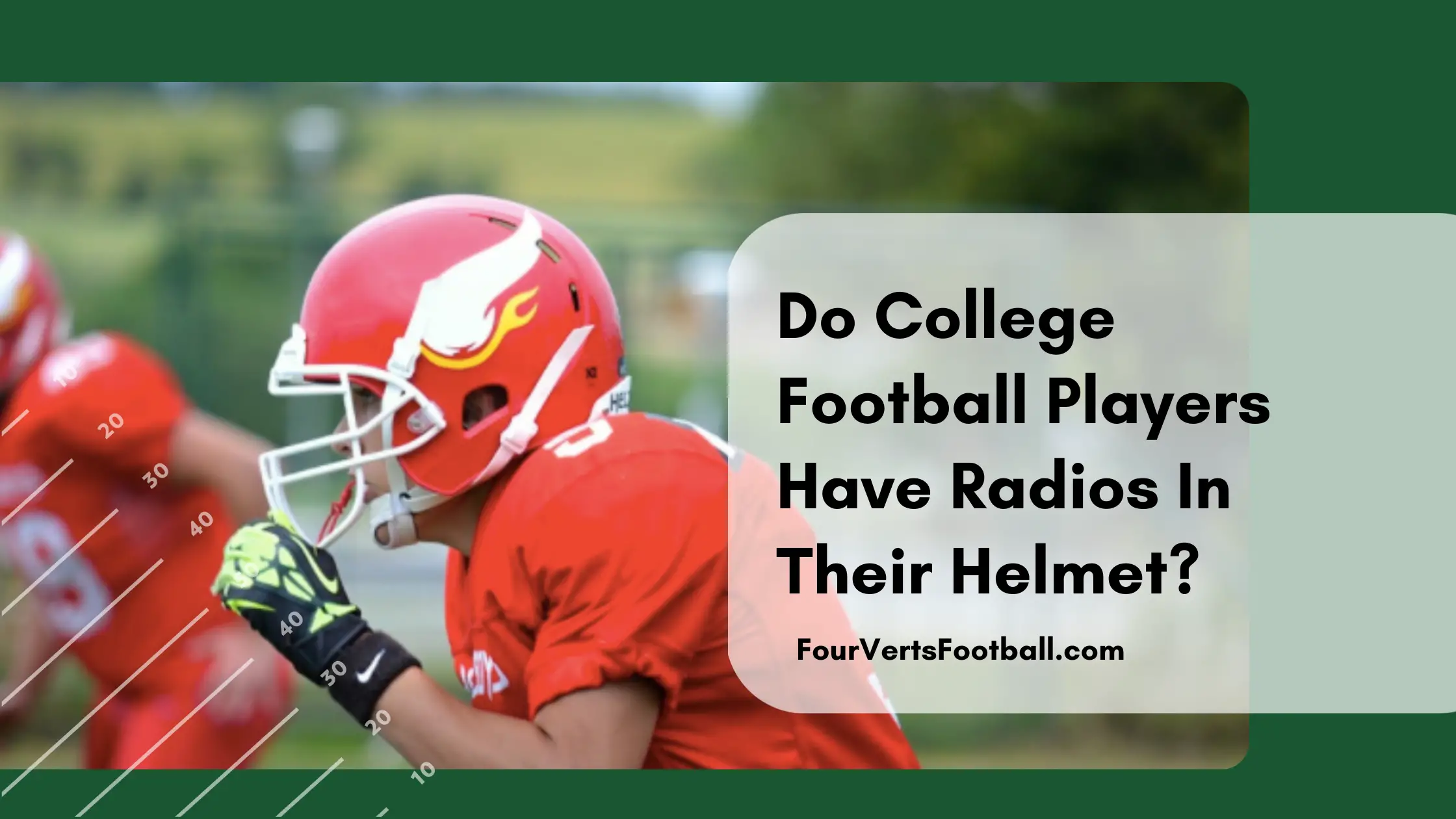The NCAA has not yet incorporated the use of in-helmet radios into collegiate football. This communication equipment was tested in an NCAA game for the first time in November of 2021 but it has not yet been made legal in the rulebook.
The NFL has been using radios in players’ helmets for years though they have a specific set of rules regarding them. Only one player on the offense and one player on the defense are allowed to have radios in their helmet.
Players with radios in their helmets are marked with a circular green sticker on their helmets. The communication in the helmet can only go from the coach to the player and not from the player back to the coach.
Additionally when there are fifteen seconds remaining before the start of the play the communication from the coach to the player will be shut off.
This means the coach must communicate with the player well before the ball is snapped.
The players that have the radio in their helmets are almost always the quarterback and the middle linebacker.
The quarterback is the leader of the offense and is responsible for leading the huddle and communicating the plays. On the defensive side of the ball, the linebacker plays this role and advises the other players on what they should do.
Since the middle linebacker lines up in the middle of the defense he has the best ability to communicate plays and audibles to the rest of his teammates.
What do coaches say to players in their helmet?
It only looks like a matter of time until college football players are going to have radios in their helmets. But what kind of changes does this mean for the quarterback.
To better understand how this technology will change the game we need to first know what they are saying over the radio.
Playcalling
The main benefit of having in-helmet communication in college football would be the ability to call plays via the radio. Currently, teams use a number of ways in order to signal plays to their quarterback.
The trouble in modern methods such as using signs has resulted in sign-stealing in college football. Previously teams rotate players each play and the player from the bench would communicate the play.
By using the in-helmet radios teams can easily relay the play to the quarterback without having to make substitutions each play or having a chance of their play call being stolen by the opposing team.
Opportunities to capitalize on
The communication from the coaches to the quarterback also allows them to advise the quarterback on what they are seeing in the defense.
Coaches will often notice weaknesses in the defense that the offense can take advantage of. By relaying these thoughts to the quarterback as he’s on the field he will have a chance to take advantage of them.
Keep in mind if the NCAA helmet radio rules are the same as they are in the NFL then the coaches will not be able to communicate once there is fifteen seconds left on the play clock.
This means any information for the quarterback must be given quickly in between plays.

